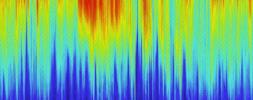The SNMREC Preferred Partner Program is an opportunity for our industry partners to collaborate more fully with the Center. This program is designed to dedicate SNMREC experts and resources to individual industry partner development needs.
Resource Measurement & Modeling

Broadly speaking, marine renewable energy falls into three categories: marine hydrokinetic energy; marine thermal energy; and marine bioenergy/biofuels. Marine hydrokinetic energy—the energy in the oceans associated with their motion—further falls into three basic forms: wave energy, tidal stream energy, and open-ocean current energy.
Compared with waves on the shores of US West Coast, Florida’s are small; the tides of northwestern and northeastern states far eclipse those of Florida. However, when open-ocean currents are considered, Florida is unique in the nation. SNMREC is therefore focusing on the marine hydrokinetic resource associated with the Florida Current.
In addition, there is a surprising thermal resource offshore of southeast Florida. The same current system that offers the rich hydrokinetic resource provides a steady flow of tropical surface water along the coast. Moreover, it turns out that the water near the bottom of the Florida Straits is sufficiently cold that the temperature difference between the two water masses can be used to drive an ocean thermal energy conversion (OTEC) system. Hawai‘i is the only other state in the U.S. with such a resource.
In order to understand and quantify these two offshore resources, SNMREC has undertaken a program of oceanographic measurements of the current and the temperature structure in the Florida Straits. Although the Florida Current—which is the reach of the Gulf Stream System flowing between Florida and the Bahamas—has been the focus of intense study by the oceanographic community for decades, the new interest in marine renewable energy recovery is motivating observations on scales relevant to this new problem.



